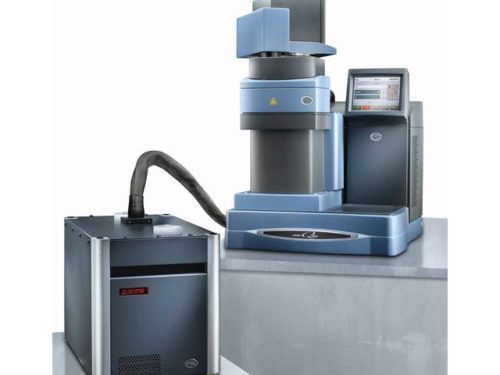Tumedei employs a number of rubber technology experts who optimise the performance of the materials to meet the demands of the individual client.
By developing physical properties based on specific end-use applications we can achieve significant performance improvements.
Examples of areas where material properties can be developed include:
- Resistance to heat ageing.
- Resistance to fluid ageing.
- UV and weather resistance.
- Low temperature flexibility and seal performance.
- Coefficient of friction.
- Lubrication of the incorporated composites.
- Materials approved for drinking water.
- Long-term performance services.
- Thermal and electrical conductivity.
- Toxicity and biocompatibility.
Tumedei has a well-equipped laboratory facility for testing elastomers, TPR and thermoplastic engineering. Test capabilities include:
DYNAMIC AND THERMAL TESTING
De Mattia Fatigue (ASTM D813)
- Adjustable strain rates and ability to test fatigue from ambient to +200° C
DMTA – Dynamic Mechanical Thermoanalyser (for example . ASTM D4065)
- It subjects the polymer to mechanical tension at different frequencies, stresses and temperatures.
- It can provide data on the effects of ageing and the level of cure.
- It can provide data for Tg, Tm and relaxation of tensions. These properties are important for choosing the correct plastic for hot water applications.
Thermal Analysis – TGA (ASTM E1131)
- A sample is taken and, depending on the temperature, the weight is monitored. As the different elements of the composite evaporate, their weight is recorded.
- Used for digital fingerprinting compounds for quality control purposes.
Thermal Analysis – DSC (for example ASTM D3417)
- Digital prints of the polymers using a temperature map of their transitions: Tg, Tm, etc.
- To determine the correct working temperature:- at what temperature it melts, on what interval of amplitude. (su che ampiezza d’intervallo).
- To determine the correct working temperature:- when is the glass transition? Above the Tg the materials are softer, below are more rigid. Effects on the end use.
FTIR infrared spectrometer (for example ISO4650)
- Measures the absorption of infrared light to determine the elements and compounds present in a material. It is very useful for quality control and material identification.
- Useful to understand the reasons behind the failure of a product. For example, when a polymer has been incorrectly exposed to a material that degrades it.
Fluid resistance (effects of liquids) as per ASTM D471
- Individual immersion test bench with automatic temperature control and chemical dosing.
- Conditions using stagnant water and with current, important for materials that develop a film during degradation. Able to detect subtle differences between types of polymers.
Static mechanical test
- Tensile strength as per ASTM 412.
- Tear resistance as per ASTM 624.
- Bending module as per ASTM 412.
- % elongation as per ASTM 412.
- Micro IRHD hardness ISO48 and Shore A as per ASTM 2240.
- Specific weight (density) as per ASTM 792.
- Permanent deformation from compression and tension as per ASTM 395.
- Tension relief as per ASTM 1646. (stress relaxation ?)
- Ageing from high and low temperature as per ASTM 573.
- Ageing by fluid immersion per ASTM 471.
- Rheology of compounds as per ASTM D2084.
- Bounce resilience test measurements as per DIN 53512.
- Mullen burst pressure test.
Contact-free dimensional measurement for product validation using optical measuring device (Tesa and Keyence Visio) for rubber parts fitted with a TTP Renishaw for plastic/metal parts.
Accuracy at 3 microns.
The measurement process can be programmed for better repeatability. It is possible to exchange files with solidworks, which allows to create a 3D model of the parts.





